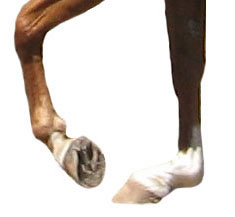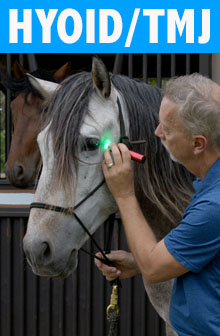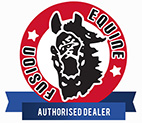Best Horse Hoof Boots
Which are the best horse hoof boots? Ideally you need a boot that supports the biomechanical functions of the lower limb and hoof and has the least amount of impact on the horse’s natural way of going.

On landing, the hoof capsule expands and the fetlock joint drops down to absorb the impact. Then the fetlock springs back up and the horse pushes off at the toe (known as the point of breakover) to propel the horse forward. Therefore the best horse hoof boot would be one that was totally flexible to allow the fetlock to drop and the hoof to expand without any interference from the boot.
KEY POINTS TO CONSIDER
Flexibility of upper – does the upper of the boot impinge on range of motion at the back of the fetlock?
Hoof boots made with semi-rigid materials – such as leather or stiff canvas-type materials – around the back of the pastern can interfere with the downwards movement of the fetlock and cause rubbing.
Fit/fastening system – where is the boot fastened and what keeps it from twisting?
Many hoof boots do not allow the hoof capsule to expand due to the location and design of the fastening systems. If the fastener tightens the boot around the hoof capsule or the boot needs a very tight fit to stay on and not twist, then there will be a constricting force on the hoof capsule and heels.

Sole thickness/flexibility – how thick is the sole and is it able to flex with the hoof?
Whilst a thick sole has some benefits such as more protection and longer lifespan of the boot is also has a lot of downsides. The thicker the sole, the further away from the ground the hoof is and this impacts on the breakover.
If the sole of the boot is unable to flex on uneven ground then you loose the balance and stabilizing qualities of the hoof capsule. If the sole of the boot cannot conform to the ground surface then there will be no natural stimulation to the sole and frog.
A rigid-sole boot does not flex in to the natural concavity of the hoof and the plastic material allows the hoof capsule to slide within the boot which causes friction wear to the sole and prevents it from gaining full thickness.
Adding a thick, deformable pad helps decrease peripheral loading and friction wear but increases the distance from the ground and lengthens the breakover which puts added strain on the limb.
Weight – how heavy is the boot?
The heavier the boot the greater the impact on the gait of the horse. Generally, the thicker the sole, the heavier the boot.
BEST HORSE HOOF BOOT SOLUTION
The Equine Fusion Jogging Shoes have been designed to fully address all the above issues and in my opinion are the best hoof boots for your horse.

BENEFITS OF THE JOGGING SHOES
- made of a soft, fully flexible upper which does not interfere with the downwards movement of the fetlock.
- the fastening system is specifically designed so as to not restrict the hoof capsule in any way and they are not reliant on a tight fit to prevent the boot from twisting.
- they have a flexible sole that conforms to the shape of the terrain to allow forces to be evenly distributed throughout the hoof and allow the hoof to feel the ground which stimulates it to develop a thicker sole and frog. The anti-friction technology in the rubber sole prevents slide within the shoe and so there is no wear on the sole of the hoof.
- the flexion of the rubber sole keeps the horse as close to the ground as possible which makes it more stable on uneven surfaces and lessens the forces on the leg during break over. It also keeps the weight of the boot lighter which in turn helps improves both balance and gait.
- they are one of the lighter boots available, especially in the smaller sizes




